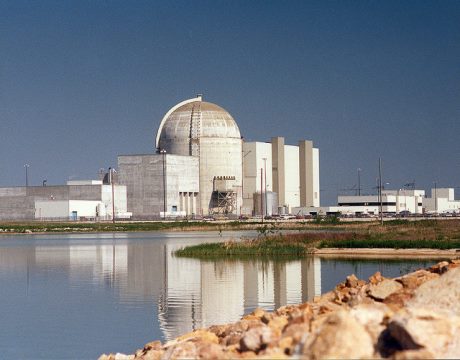A software error at the Wolf Creek nuclear power plant that would have overestimated iodine emissions in the event of an accident was of low to moderate safety significance, US regulators have ruled. The error went uncorrected for over a year.
 |
| Wolf Creek (Image: NRC) |
The issue was discovered by US Nuclear Regulatory Commission (NRC) inspectors during a scheduled emergency preparedness exercise at the single-unit pressurized water reactor plant in Kansas last November. The exercise simulated the effects of an accident caused by an earthquake leading to an automatic plant trip, reactor coolant system leak and other system failures. These would have resulted in radiological release to the environment.
In normal operation, levels of noble gases, radioactive iodine and radioactive particulates in the plant's main ventilation stack are monitored by separate detectors. In an emergency situation, the detectors for iodine and particulates would not be available, so the plant's radiological assessment software (Electronic Dose Calculation Program, or EDCP) calculates assumed release rates from the measured rates of noble gases using a default noble gas to iodine ratio of 10:1. Wolf Creek's EDCP was found not to be applying the default ratio correctly when the monitor was in accident mode, overestimating the concentration of iodine and particulates by a factor of 10.
Later, NRC inspectors found the licensee, the Wolf Creek Nuclear Operating Corporation, had known since November 2012 that the ECDP was potentially inaccurate and had initiated a service request to its own information systems department to investigate the problem, but the request had not been acted on.
The NRC has now confirmed the incident was a 'white finding' - the second level of the regulator's four-stage colour-coded classification of safety significance. The first and least serious stage is coded as green.
"This finding is more than minor because it affected the licensee’s ability to implement adequate measures to protect the health and safety of the public," the NRC ruled in its preliminary report dated 2 April. "The licensee failed to verify the existence of a safety-significant problem and subsequently failed to resolve the problem within a timeframe appropriate to its safety significance," it said.
Following the exercise in November, Wolf Creek Nuclear Operating Corporation put in place interim measures to address the problem and the issue was finally corrected in an upgrade to the EDPC in February.
Researched and written
by World Nuclear News




_47120.jpg)

_23621.jpg)






